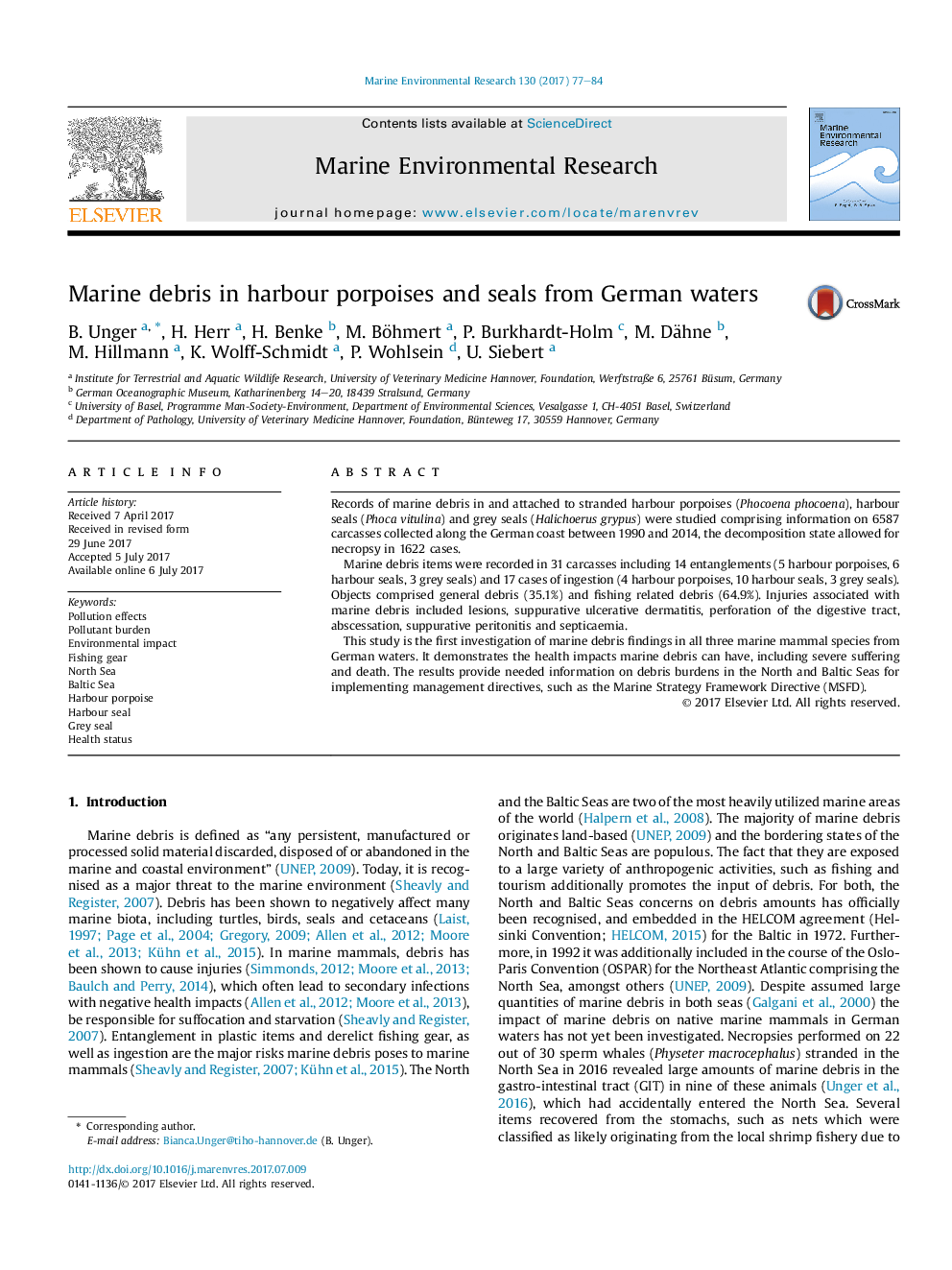| کد مقاله | کد نشریه | سال انتشار | مقاله انگلیسی | نسخه تمام متن |
|---|---|---|---|---|
| 5766145 | 1627553 | 2017 | 8 صفحه PDF | دانلود رایگان |
- 0.5 % of all carcasses collected between 1990-2014 showed external or internal marine debris findings.
- A high share of fishing related debris was found (64.9% of all findings).
- Injuries associated with marine debris included lesions, perforation of the digestive tract and septicaemia.
- This study demonstrate the health impacts marine debris can have on marine mammals, including severe suffering and death.
- This is the first assessment of marine debris impacts on marine mammals from German waters.
Records of marine debris in and attached to stranded harbour porpoises (Phocoena phocoena), harbour seals (Phoca vitulina) and grey seals (Halichoerus grypus) were studied comprising information on 6587 carcasses collected along the German coast between 1990 and 2014, the decomposition state allowed for necropsy in 1622 cases.Marine debris items were recorded in 31 carcasses including 14 entanglements (5 harbour porpoises, 6 harbour seals, 3 grey seals) and 17 cases of ingestion (4 harbour porpoises, 10 harbour seals, 3 grey seals). Objects comprised general debris (35.1%) and fishing related debris (64.9%). Injuries associated with marine debris included lesions, suppurative ulcerative dermatitis, perforation of the digestive tract, abscessation, suppurative peritonitis and septicaemia.This study is the first investigation of marine debris findings in all three marine mammal species from German waters. It demonstrates the health impacts marine debris can have, including severe suffering and death. The results provide needed information on debris burdens in the North and Baltic Seas for implementing management directives, such as the Marine Strategy Framework Directive (MSFD).
Journal: Marine Environmental Research - Volume 130, September 2017, Pages 77-84
